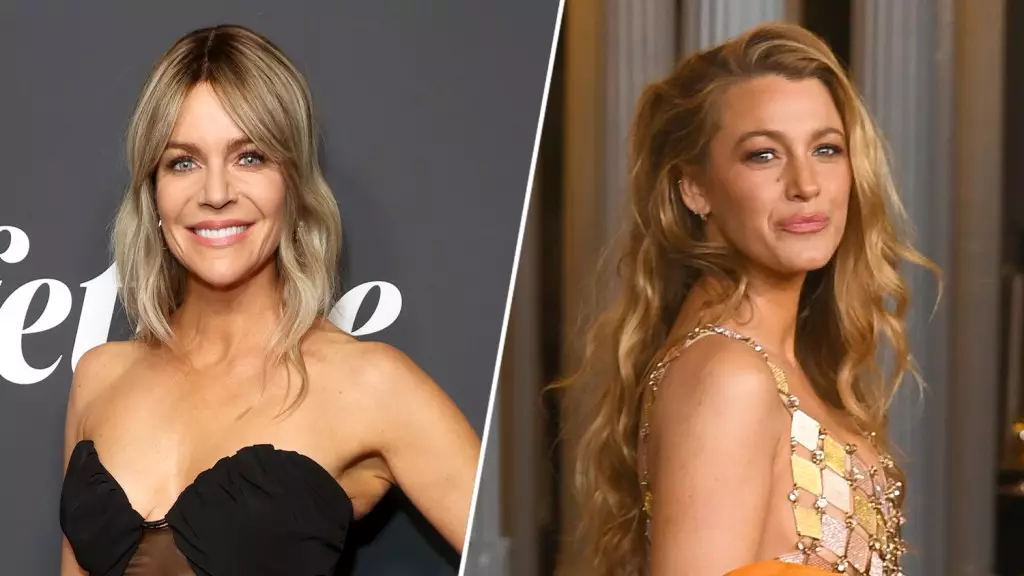The recent allegations made by actress Blake Lively against director and co-star Justin Baldoni have sparked a wave of support for her while simultaneously igniting a contentious debate about workplace conduct and the repercussions of speaking out. In the wake of these claims, various celebrities, including Kaitlin Olson, have expressed their allegiance to Lively, praising her character and bringing attention to the issues at the heart of this unfolding drama.
At the core of Lively’s legal dispute is her assertion of sexual harassment and retaliation during the filming of “It Ends with Us.” This revelation has sent shockwaves through Hollywood, putting a spotlight on the sometimes toxic dynamics that can exist on film sets. Lively has accused Baldoni and his production company, Wayfarer Studios, of orchestrating a campaign to tarnish her reputation following her decision to speak up about the alleged misconduct. She painted a vivid picture of a hostile work environment that threatened to derail the film’s production, highlighting the broader systemic issues of harassment that persist in the industry.
Lively’s decision to go public is emblematic of a larger movement, encouraging individuals to come forward about their experiences and hold perpetrators accountable. Her statement encapsulates a sentiment shared by many: the hope that her legal action will illuminate the retaliatory measures designed to silence victims of misconduct. It’s a clarion call for transparency and a pushback against the insidious tactics that allow workplace harassment to flourish unnoticed.
Kaitlin Olson’s public endorsement serves as a reminder of the importance of solidarity among women, especially in industries where power imbalances can stifle voices. By asserting that Lively is “a kind, lovely, honest and generous person,” Olson doesn’t just defend her friend; she also emphasizes the need for peers to support one another in the face of adversity. Such public endorsements can play a crucial role in encouraging others to share their stories without fear of retribution.
Lively’s accusations come at a time when many are reassessing their own experiences and the standards of conduct in the entertainment world. These discussions underscore a critical turning point, suggesting that the past culture of silence and inaction is becoming increasingly untenable. Olson’s statement not only strengthens Lively’s position but also reflects a growing consciousness among actors regarding the ramifications of their actions and the importance of solidarity.
Justin Baldoni, fully aware of the implications surrounding these allegations, vehemently denied any wrongdoing, describing Lively’s claims as “completely false” and suggesting that they are part of a campaign to harm his reputation. This fiery retort raises questions about the nature of truth in the context of public perception and media narratives. His defensive stance positions him in a complicated spot; while he is poised to fight back legally, he places both his career and public image at risk in what could become a protracted battle.
Baldoni’s reaction, characterized by statements from his lawyer Bryan Freedman, hints at a larger strategy and articulates a deep frustration with how media can shape narratives regardless of the truth. This dynamic signals a shift where perceptions can rapidly overshadow facts, leaving individuals caught in a web of conflicting narratives—each claiming victimhood in a story that is continually being rewritten in the public eye.
As legal actions unfold, the intricate web of claims and counterclaims unfolds, presenting a complex tableau of ambition, betrayal, and resilience. It’s essential to recognize the implications of Lively’s detailed 80-page complaint, which highlights not just her personal grievances but also broader systemic issues around power dynamics in Hollywood. Simultaneously, Baldoni’s planned counter lawsuit signals that tensions are only escalating; it suggests a vitriolic back-and-forth that could have lasting repercussions on both their careers.
The implications of this controversy extend beyond just Lively and Baldoni. It serves as a reflection of an industry grappling with a tumultuous reckoning regarding sexual harassment, retaliation, and the ethics of behavior on set. The resonance of this issue cuts across various sectors, pushing conversations about workplace decorum and accountability to the forefront.
The Blake Lively-Justin Baldoni controversy is more than just another high-profile clash; it signals a moment of reckoning within the entertainment industry. As more individuals come forward with their accounts and support each other, the need for genuine systemic change becomes undeniable. This situation illustrates how speaking out against misconduct not only addresses personal grievances but may also foster an environment of integrity, transparency, and respect that is long overdue in Hollywood and beyond. As the dust settles and more information comes to light, the hope is that this conversation will inspire lasting change for survivors everywhere, ensuring that courage is rewarded and silence is no longer the norm.
